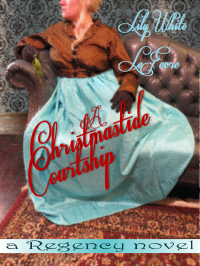Or, The Tipping Point
My last post, about novellas and novels and finishing stories, got me thinking about what I would call the tipping point in a story. For me, reading, it is the moment when I know that I will not be able to put the book down until it’s finished. Sometimes this happens 30 pages in, and sometimes it happens 30 pages from the end.
I sometimes experience that same sort of tunnel vision obsession with writing—that point when I can see the end in sight and find my thoughts relentlessly coming back to the story at hand, when I simply cannot write on anything else because the only thing I want to say are the next words in that story. It happens with novellas when I am about 10 pages from the end, which is substantive for them…a third to a quarter of the way from the conclusion.
I have never experienced that point with a novel. I am not sure where that point would be, whether it would come at about the same place in the story—so after, say, 60-70,000 words—or if it would still be 10 pages from the end.
I have what I like to refer to as creative ADD. Basically, I have issues sticking with just one story at a time, so I tend to write on several sequentially, until I hit that tipping point with one of them, and then I make a mad dash to finish it. I am currently juggling four novellas, two novels, and two 2-in-1 stories that might ultimately become two novels or four novellas (or, I guess, one novel and two novellas). In some cases this co-writing is necessary because actions in two of the stories run parallel, and writing them contiguously—developing the details of them contiguously—prevents me from finding myself painted in a corner later.
Despite the multitudes of words I write, when they are spread out like this amongst so many different projects it is sometimes hard to feel like I’m making much headway even on the novellas. That’s why that tipping point is so necessary for me. It is the point where my uncertainty fades, and I can move forward with absolute confidence in my story, my characters, and my words.
One of my favorite non-romance books has a great quote about painting, and how a painting cannot be approached timidly or with hesitation—it must be done boldly if there is hope for it to be finished. I think that an analogy could be drawn for any sort of creative project. I know for me, as excited as I am about a story at the beginning, when I am first laying down words and moments, there is always a wide sea of uncertainty in the middle. It’s when I can see the other side at last that I move with utter confidence. It’s my favorite part of every story.




